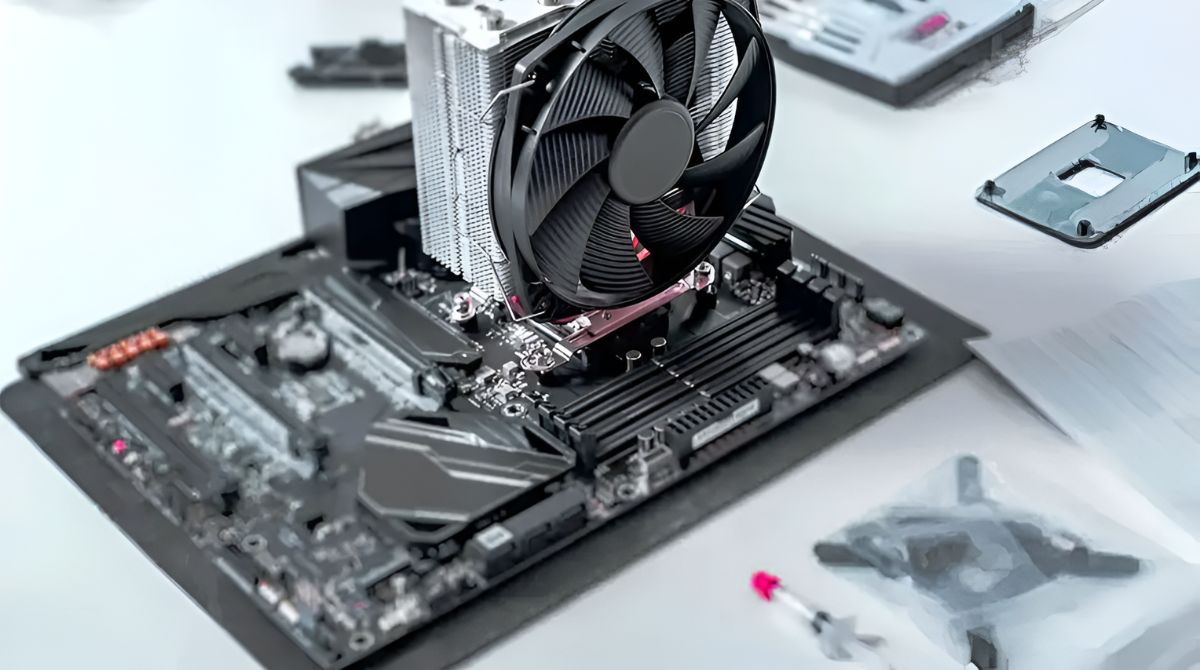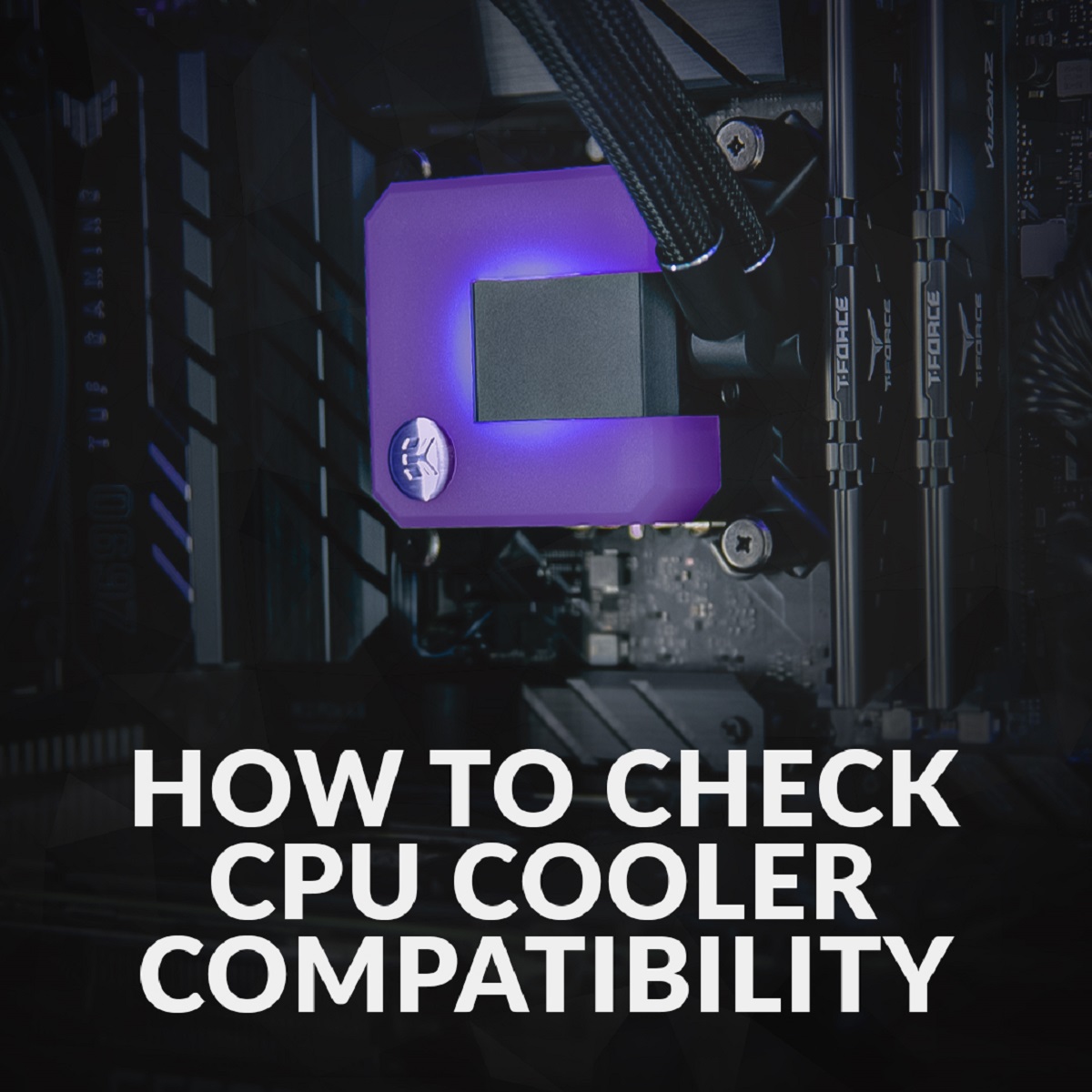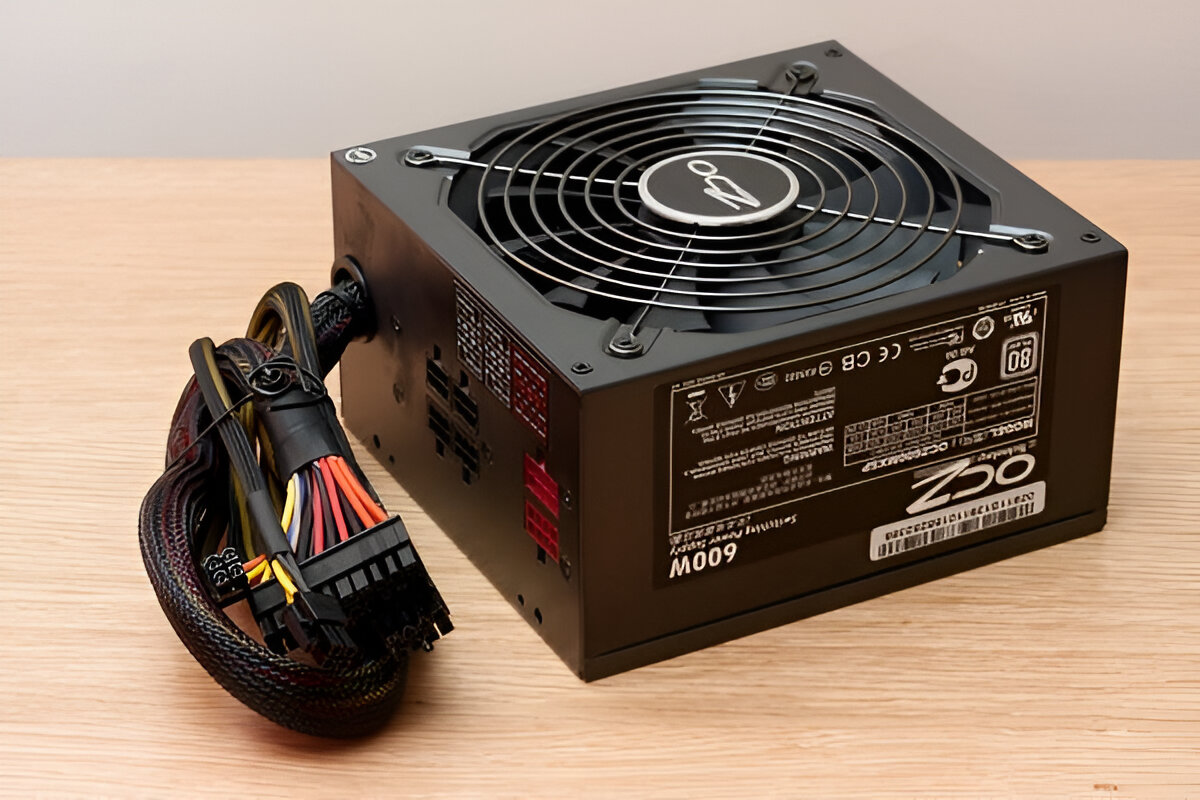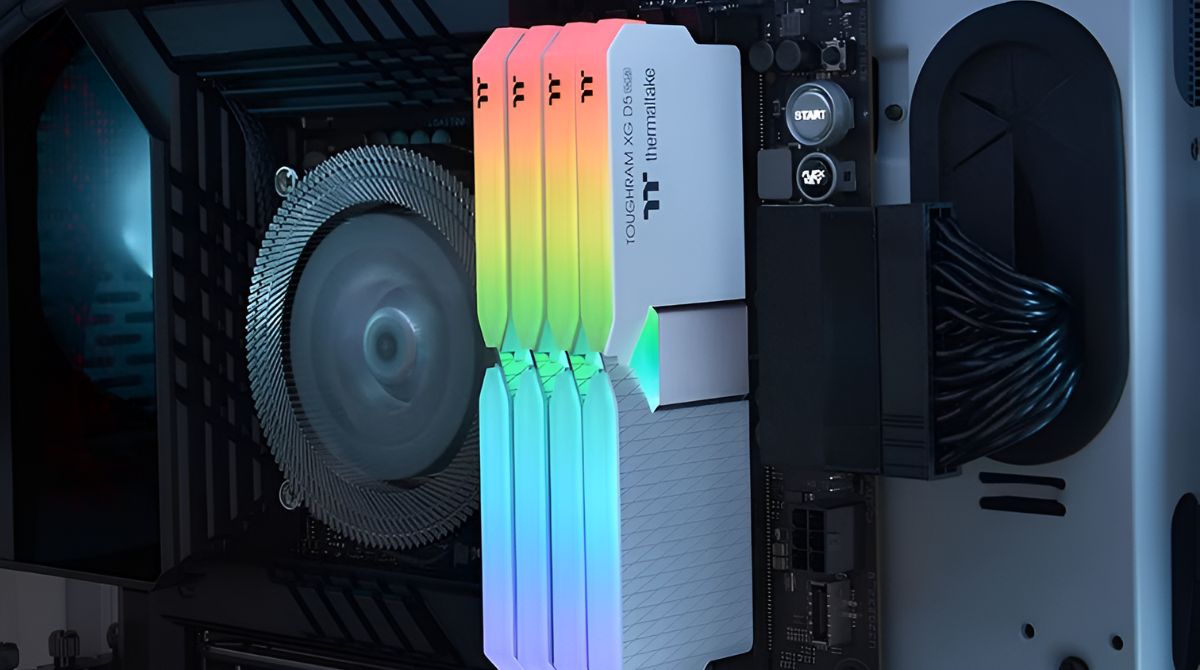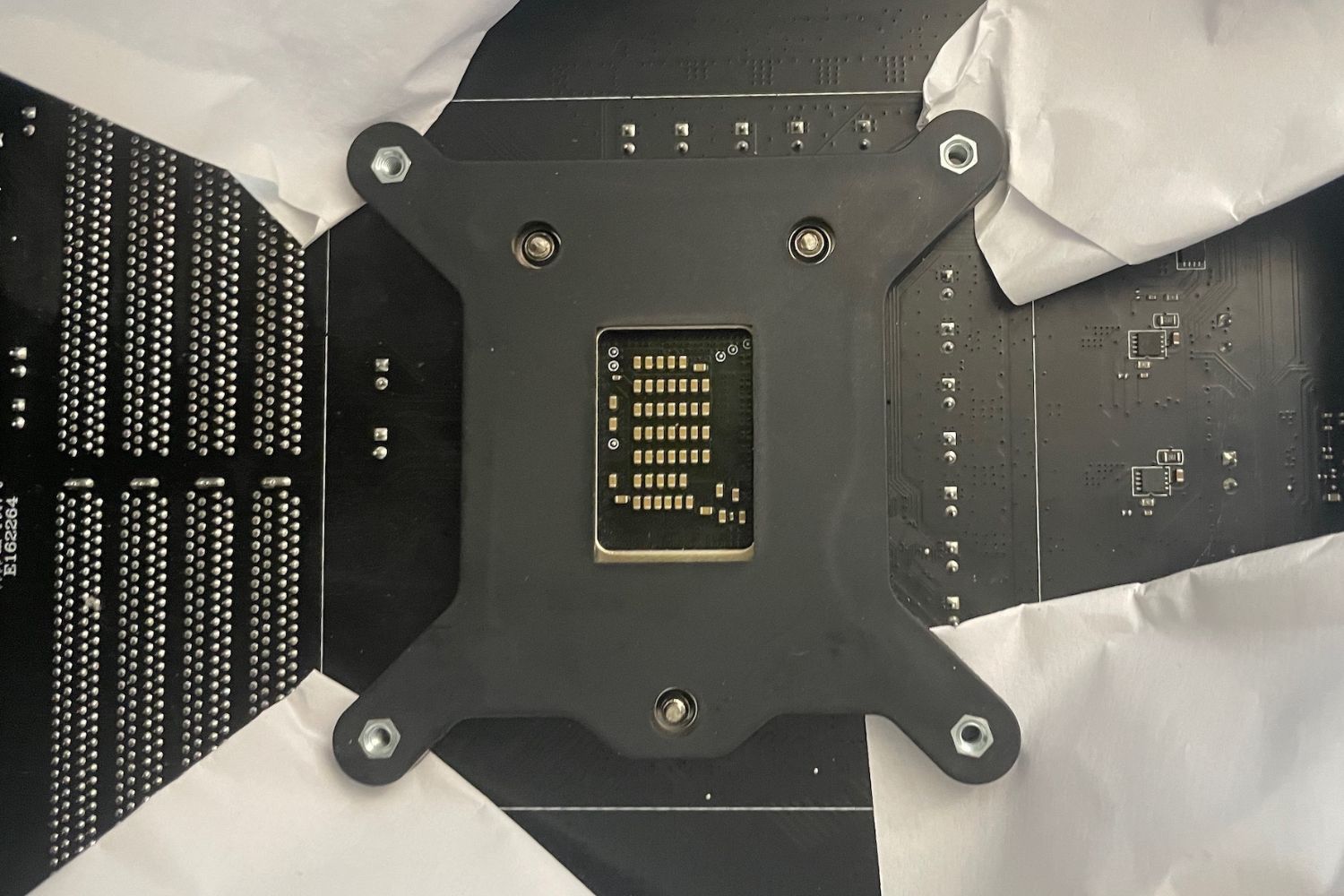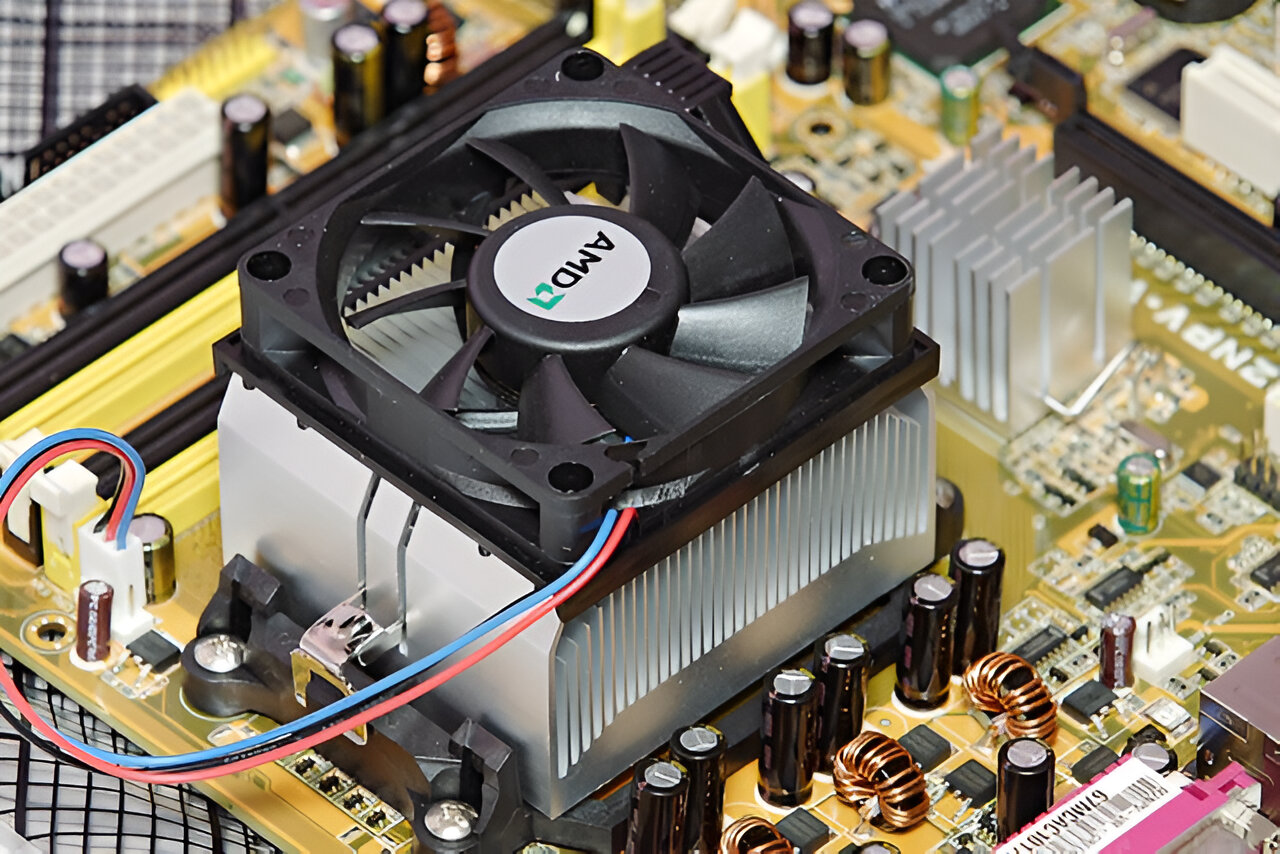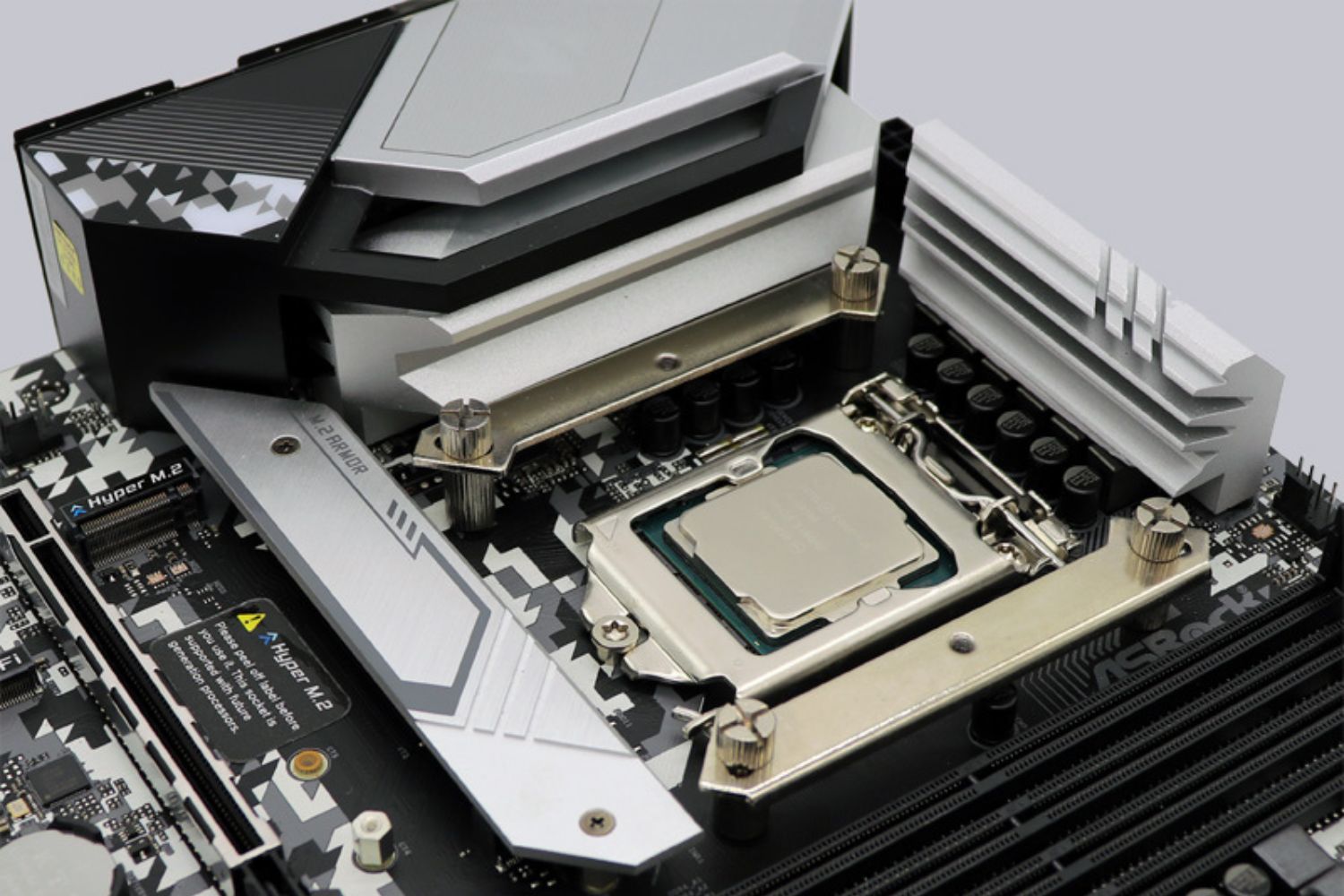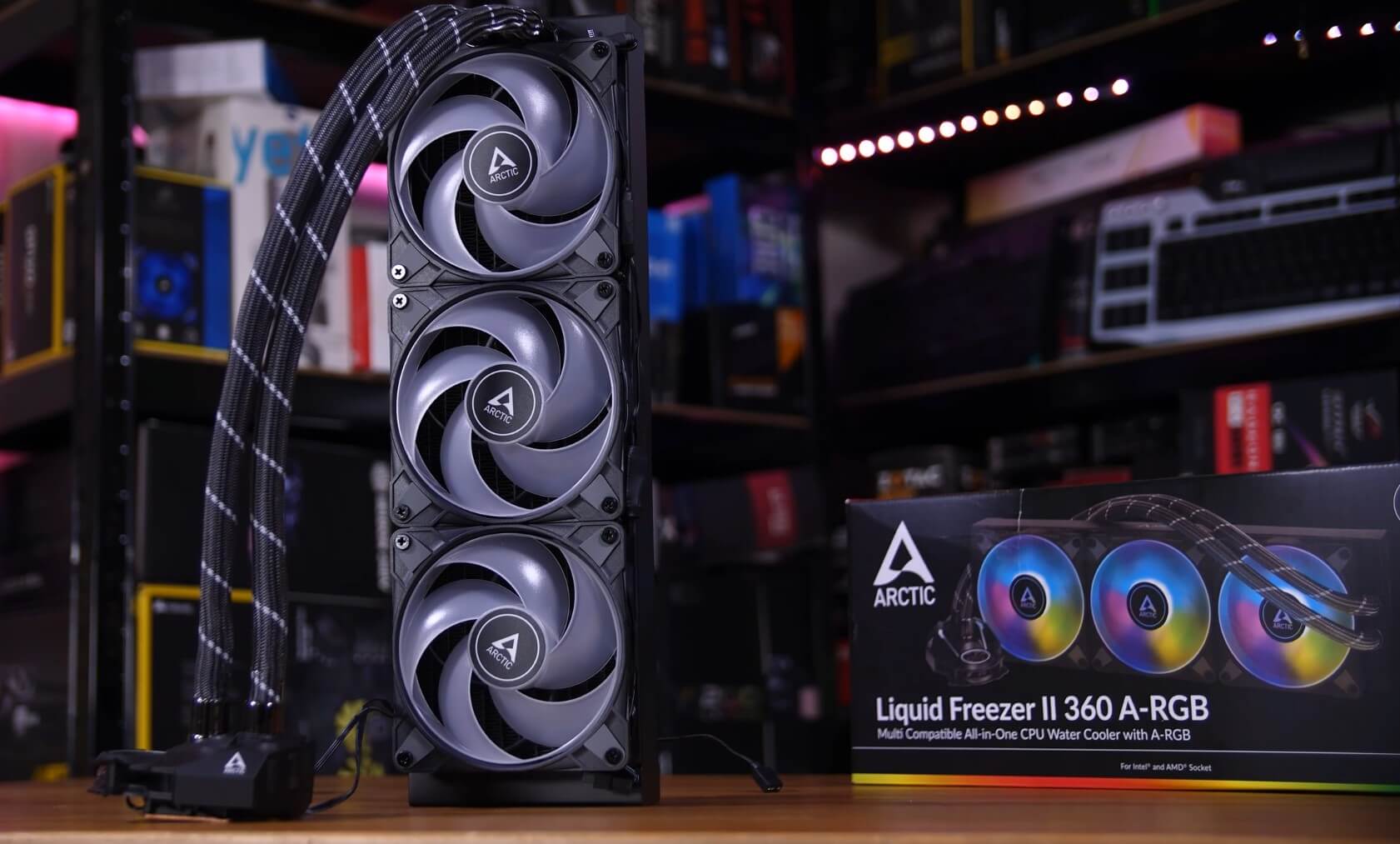Introduction
When it comes to building or upgrading a computer, ensuring compatibility between components is crucial. One important aspect to consider is the compatibility between the motherboard and the CPU cooler. The motherboard and CPU cooler must be compatible not only in terms of physical fitment but also in terms of the socket type and other specifications.
Understanding the compatibility between the motherboard and the CPU cooler is essential to ensure optimal performance and prevent any potential damage to the components. In this article, we will guide you through the process of checking the compatibility between your motherboard and CPU cooler.
Before we dive into the technical details, it’s important to note that different motherboards and CPU coolers may have different compatibility requirements. Therefore, it’s always recommended to consult the documentation and specifications provided by the motherboard and CPU cooler manufacturers. This will help you understand the specific compatibility requirements for your components and ensure a seamless installation process.
Now, let’s explore the key aspects of motherboard to CPU cooler compatibility to help you make an informed decision and avoid any potential compatibility issues.
Understanding Compatibility
Before diving into the process of checking motherboard to CPU cooler compatibility, it’s important to have a clear understanding of what compatibility entails. Compatibility refers to the ability of two or more components to work together harmoniously, without any conflicts or issues. In the context of a computer build, compatibility between the motherboard and CPU cooler ensures that they are compatible in terms of physical fitment, socket type, power support, and other specifications.
The motherboard serves as the central hub that connects all the components of a computer system, including the CPU, RAM, storage devices, and expansion cards. On the other hand, the CPU cooler is responsible for dissipating heat generated by the processor to maintain optimal operating temperatures.
When it comes to compatibility between the motherboard and CPU cooler, there are several key factors to consider. The most critical factor is the socket type. Socket type refers to the physical interface on the motherboard that connects the CPU to the rest of the system. Different CPU sockets have different pin layouts and shapes, and therefore, require specific CPU coolers designed to fit those sockets.
Another important aspect of compatibility is the physical fitment. This refers to the size and dimensions of the CPU cooler and the available space on the motherboard for its installation. Some CPU coolers may be too large to fit within the confines of certain computer cases or interfere with nearby components such as RAM modules or PCIe slots. It’s essential to ensure that the CPU cooler fits within the available space without any clearance issues.
Power support is another significant consideration. The maximum power consumption of the CPU cooler and the power delivery capabilities of the motherboard should be compatible. Inadequate power support can lead to instability or even damage to the components.
By understanding these key aspects of compatibility, you can ensure that the motherboard and CPU cooler are well-matched, leading to optimal performance and a smooth computing experience. In the following sections, we will explore the specific steps to check compatibility between the motherboard and CPU cooler.
Checking Motherboard Socket Type
The first step in checking motherboard to CPU cooler compatibility is to determine the socket type of your motherboard. The socket type is a crucial factor as it determines the physical interface that connects the CPU to the motherboard. Different CPUs have different socket types, and therefore, require corresponding CPU coolers designed specifically for those sockets.
To check the socket type of your motherboard, you can refer to the documentation that came with your motherboard or visit the manufacturer’s website. The socket type is usually clearly mentioned in the specifications section of the motherboard’s documentation or on the product page of the manufacturer’s website. It is important to note that socket types are typically represented by a numerical designation, such as LGA 1151 for Intel or AM4 for AMD.
Once you have identified the socket type of your motherboard, you can proceed to check the compatibility of your chosen CPU cooler. Most CPU cooler manufacturers provide a list of compatible socket types for each of their coolers, either on their website or in the product documentation. Ensure that the CPU cooler you intend to purchase or use is listed as compatible with your motherboard’s socket type.
It’s also worth checking the physical layout of the socket on your motherboard. Some motherboards may have additional notches or pins near the socket that are specific to certain CPU coolers. This information is usually mentioned in the motherboard’s documentation or can be found on the manufacturer’s website. Ensuring that the physical layout of the socket matches the corresponding CPU cooler will help avoid any compatibility issues.
By checking the motherboard socket type and ensuring compatibility with the desired CPU cooler, you can ensure a proper fit and secure connection between the CPU and the cooler. This will allow for efficient heat dissipation and prevent any potential damage to the components.
Checking CPU Cooler Socket Type
Once you have determined the socket type of your motherboard, the next step in ensuring compatibility is to check the socket type of the CPU cooler. CPU coolers are specifically designed to fit certain socket types, and it’s essential to choose a cooler that is compatible with the socket type of your motherboard.
To check the socket type of your chosen CPU cooler, you can refer to the manufacturer’s specifications or product documentation. The socket type compatibility information is usually clearly mentioned in the product details or on the packaging. It’s important to ensure that the CPU cooler you choose supports the same socket type as your motherboard.
When checking the CPU cooler socket type, it’s also crucial to consider any potential model variations or revisions. Manufacturers may release multiple versions of a CPU cooler model, each with different socket compatibility. Make sure to check the specific model or version of the CPU cooler you intend to purchase or use, and verify its compatibility with your motherboard’s socket type.
In addition to the socket type, you should also consider the mounting mechanism of the CPU cooler. Different CPU coolers may utilize various methods for mounting to the motherboard, such as screws, brackets, or clips. It’s essential to ensure that the mounting mechanism of the CPU cooler aligns with the mounting holes or slots available on your motherboard.
By checking the socket type and mounting mechanism of the CPU cooler, you can ensure a proper and secure fit between the CPU and the cooler. A compatible CPU cooler will allow for efficient heat dissipation and prevent any potential issues or damage to the components.
Comparing Socket Types
When checking compatibility between the motherboard and CPU cooler, it’s important to compare the socket types of both components. The socket type of the motherboard should match the socket type supported by the CPU cooler for them to be compatible.
There are several popular socket types used by different CPU manufacturers, such as Intel and AMD. For Intel processors, common socket types include LGA 1151, LGA 1200, and LGA 2066, while for AMD processors, common socket types include AM4, TR4, and sTRX4.
To ensure compatibility, it’s crucial to compare the socket types of your motherboard and CPU cooler. Check the documentation or specifications provided by the motherboard and CPU cooler manufacturers to determine the supported socket types. If the socket types match, the CPU cooler is likely compatible with the motherboard.
If the socket types don’t match, it’s important to find a CPU cooler that specifically supports the socket type of your motherboard. Many CPU cooler manufacturers provide compatibility lists or filters on their websites, allowing you to search for coolers that are compatible with your specific socket type.
It’s worth noting that some CPU coolers may support multiple socket types, providing additional flexibility for upgrades or compatibility with different systems. These coolers often come with different mounting brackets or mechanisms to accommodate various socket types. Ensure that the CPU cooler you choose offers the necessary mounting hardware for your motherboard’s socket type.
By comparing the socket types of the motherboard and CPU cooler, you can determine their compatibility. Choosing a CPU cooler that supports the same socket type as your motherboard is crucial for a successful and hassle-free installation process.
Considerations for CPU Cooler Height
Another important factor to consider when checking the compatibility between the motherboard and the CPU cooler is the height of the cooler. The height of the CPU cooler can impact its compatibility with other components in the system, such as the computer case and nearby RAM modules.
Before choosing a CPU cooler, it’s essential to ensure that it will fit within the available space inside your computer case. Most computer cases provide a maximum CPU cooler height specification, indicating the tallest cooler that can be installed without causing clearance issues. It’s important to check this specification and compare it to the height of the CPU cooler you intend to use.
In addition to the physical fit within the case, the height of the CPU cooler should also allow for proper clearance around other components, especially the RAM modules. Some CPU coolers feature a high-profile design that can extend over the RAM slots, causing interference and preventing the installation or removal of RAM modules.
When considering the CPU cooler height, it’s recommended to measure the distance between the CPU socket and the closest obstruction, such as the computer case side panel or any nearby components. This will help determine the maximum height that the CPU cooler can have without causing any interference.
Furthermore, it’s crucial to consider airflow and cooling performance when choosing a CPU cooler. Some high-profile coolers can obstruct airflow within the case, limiting the effectiveness of the cooling system. It’s important to strike a balance between the height of the cooler, its cooling performance, and the overall airflow within the case.
By considering the height of the CPU cooler, you can ensure a proper fit within the computer case and prevent any interference with other components. This will help maintain optimum airflow and cooling performance, contributing to the overall stability and efficiency of the system.
Matching CPU Cooler TDP and Motherboard Power Support
When checking the compatibility between the motherboard and the CPU cooler, it’s important to consider the Thermal Design Power (TDP) rating of both components. TDP refers to the maximum amount of heat that a component, such as the CPU or the CPU cooler, is designed to dissipate under normal operating conditions.
The TDP rating of the CPU cooler should be able to handle the heat generated by the CPU. If the CPU generates more heat than the cooler can dissipate, it can lead to thermal throttling, reduced performance, or even damage to the CPU. Therefore, it’s crucial to choose a CPU cooler with a TDP rating that matches or exceeds the TDP rating of the CPU.
Additionally, it’s essential to consider the power support capabilities of the motherboard. Some high-end motherboards provide additional power delivery options, such as multiple CPU power connectors or enhanced power phases, to support overclocking or high-performance CPUs. These features offer better power delivery and stability under heavy loads, which can be beneficial when using powerful CPUs that generate higher heat.
It’s important to ensure that the motherboard you choose can support the power requirements of both the CPU and the CPU cooler. Check the motherboard’s specifications or consult the manufacturer’s documentation to determine the maximum power delivery capabilities and any specific power requirements for the CPU cooler.
Matching the TDP rating of the CPU cooler with the CPU and ensuring that the motherboard can provide adequate power support will help maintain stable and efficient operation of the system. It will also ensure that the CPU cooler can effectively dissipate heat and prevent any potential performance issues due to overheating.
Compatibility with RAM and PCIe Slots
When checking compatibility between the motherboard and the CPU cooler, it’s important to consider the potential impact on other components, specifically the RAM and PCIe slots. The size and design of the CPU cooler can affect the clearance and accessibility of these components, potentially causing compatibility issues.
One area where compatibility issues can arise is with the RAM modules. Some CPU coolers have a large heatsink or fan assembly that extends over the RAM slots. This can prevent the installation or removal of RAM modules, causing inconvenience or limiting the number of RAM slots that can be used.
It’s important to ensure that the CPU cooler allows sufficient clearance for the RAM modules, especially if you plan to use larger or taller RAM modules. Checking the height clearance between the CPU cooler and the closest RAM slot is essential to prevent any physical interference.
Another consideration is the compatibility with PCIe slots. Some larger CPU coolers, particularly tower-style coolers, can partially or fully obstruct the adjacent PCIe slots. This can limit the number of available expansion slots or interfere with the installation of larger graphics cards or other PCIe devices.
Prior to selecting a CPU cooler, it’s recommended to verify that the cooler’s dimensions and design won’t interfere with the RAM slots or block any necessary PCIe slots. Checking the specifications or consulting the manufacturer’s documentation for both the CPU cooler and the motherboard can provide important information on potential compatibility issues.
If compatibility issues arise, you may need to consider alternative CPU coolers that offer better clearance for the RAM modules and PCIe slots. Low-profile coolers or those specifically designed for better compatibility with RAM and PCIe slots can be suitable alternatives.
Ensuring compatibility with RAM and PCIe slots will allow for proper installation and operation of these components alongside the CPU cooler, maximizing the functionality and expandability of your system.
Other Compatibility Factors to Consider
While the socket type, CPU cooler height, TDP rating, and compatibility with RAM and PCIe slots are crucial factors to check when ensuring compatibility between the motherboard and CPU cooler, there are a few additional factors to consider as well:
1. Mounting Mechanism: Different CPU coolers have varying mounting mechanisms, such as screws, brackets, or clips. It’s important to ensure that the mounting mechanism is compatible with the motherboard. Check the motherboard’s specifications to determine if it supports the specific mounting mechanism of your chosen CPU cooler.
2. Case Clearance: In addition to CPU cooler height, it’s important to consider the available clearance within the computer case. Ensure that the CPU cooler can fit comfortably within the case without obstructing other components or interfering with airflow. The dimensions of both the CPU cooler and the computer case should be taken into account to ensure a proper fit.
3. Fan Header Compatibility: CPU coolers typically come with fans to aid in heat dissipation. Before purchasing a CPU cooler, ensure that your motherboard has enough fan headers available to connect the additional fans. If not, you may need to use a fan splitter or controller to accommodate the extra fans.
4. Fan Noise: Consider the noise level of the CPU cooler’s fans. While some users prioritize performance over noise, others prefer quieter operation. Check reviews or specifications to evaluate the noise level of the CPU cooler’s fans and determine if it aligns with your preferences.
5. Aesthetics: If the visual appearance of your computer build is important to you, consider the design and aesthetics of the CPU cooler. Some coolers come with RGB lighting or sleek designs that can enhance the overall look of your system. Choose a CPU cooler that matches your desired aesthetic appeal.
By considering these additional compatibility factors, you can ensure that all aspects of your motherboard and CPU cooler configuration align seamlessly, leading to a reliable, efficient, and visually appealing computer build.
Conclusion
Ensuring compatibility between the motherboard and CPU cooler is crucial for a successful computer build or upgrade. By following the steps outlined in this article, you can avoid potential issues such as physical fitment problems, socket incompatibility, insufficient cooling, or interference with other components.
Start by checking the socket type of your motherboard and CPU cooler to ensure they are compatible. Compare the socket types and verify that they match or find a CPU cooler that specifically supports your motherboard’s socket type.
Consider the height of the CPU cooler and ensure that it fits within the available space in your computer case. Take into account the clearance needed for RAM modules and PCIe slots to prevent any physical interference that may limit the functionality of these components.
Match the TDP rating of the CPU cooler with the power support capabilities of the motherboard to ensure efficient heat dissipation and prevent any potential performance issues due to overheating.
Additionally, consider other compatibility factors such as the mounting mechanism, case clearance, fan header availability, fan noise, and aesthetic considerations to achieve a well-rounded and harmonious system configuration.
By carefully checking these compatibility factors and selecting components that work seamlessly together, you can create a stable, efficient, and compatible computing setup that will meet your needs and maximize performance.
Remember to always refer to the documentation and specifications provided by the motherboard and CPU cooler manufacturers for specific compatibility requirements. Taking the time to ensure compatibility will save you from potential headaches in the future and result in a smooth and enjoyable computing experience.







